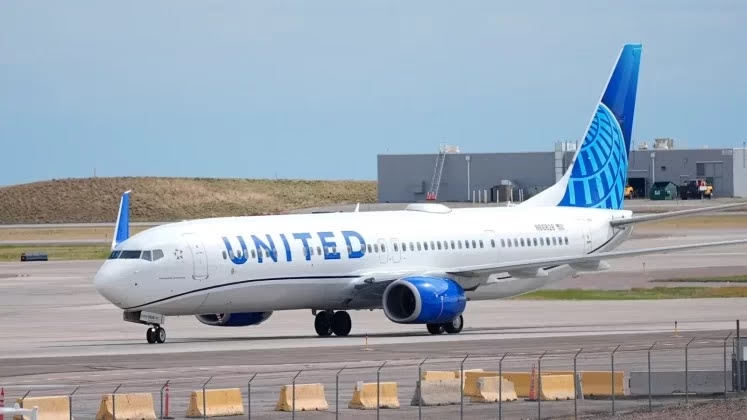United 787’s Sudden Altitude Drop Injures Passengers and Crew
March 22, 2025 – A routine transcontinental flight turned into a terrifying ordeal when a United Airlines Boeing 787 Dreamliner suddenly plummeted mid-air, injuring dozens of passengers and crew members. The dramatic incident, which occurred at an altitude of 36,000 feet, has left aviation experts scrambling for answers while survivors recount the harrowing moments of freefall.
A Flight Like Any Other
United Airlines Flight 347 was en route from Los Angeles to Tokyo, carrying 234 passengers and 12 crew members. The journey began smoothly, with takeoff from LAX at 10:15 AM PST. Passengers settled into their seats, some preparing for the long-haul flight with movies, others drifting into sleep. Nothing seemed out of the ordinary—until disaster struck.
At approximately 1:42 PM, three hours into the flight, the aircraft suddenly lurched downward, sending passengers and unsecured objects hurtling toward the ceiling. The rapid descent, which lasted roughly 15 seconds, caused widespread panic as screams filled the cabin. Those who weren’t wearing seatbelts were violently thrown into the air, crashing back onto their seats or the floor as the plane stabilized.
“Like a Rollercoaster Drop—But Worse”
One passenger, Sarah Lin, described the chaos. “It felt like the bottom just dropped out. One second I was reading, and the next, I was weightless, floating out of my seat before slamming down hard. I saw a flight attendant hit the ceiling—she just flew up, like in a zero-gravity chamber.”
Others echoed similar accounts of sheer terror. James Donovan, traveling with his wife and two children, said, “The whole plane shook violently, and then it felt like we were free-falling. I thought we were crashing. My wife was thrown forward and hit the armrest. My son, who wasn’t buckled in yet, was lifted completely off his seat. It was the scariest thing I’ve ever experienced.”
Several passengers sustained injuries, ranging from minor bruises to more severe concussions and fractures. At least two flight attendants were seriously hurt, one suffering a broken arm and another sustaining a deep head wound from striking an overhead bin.
What Caused the Sudden Drop?
While investigations are ongoing, early reports suggest that the aircraft encountered a powerful pocket of turbulence over the Pacific Ocean. Severe turbulence, caused by abrupt changes in wind speed and direction, can sometimes create dangerous vertical wind shear, leading to sudden altitude changes. However, experts are not ruling out a possible mechanical malfunction or autopilot failure.
Aviation analyst Mark Caldwell weighed in on the situation: “While turbulence can be intense, a drop of this magnitude is rare and concerning. Investigators will be looking at black box data to determine whether this was purely a weather-related event or if there were mechanical factors at play.”
Pilots’ Response and Emergency Measures
Despite the terrifying ordeal, the flight crew managed to regain control swiftly. The pilots, following protocol, stabilized the aircraft and immediately checked for structural damage. After assessing that the plane was still airworthy, they contacted United’s operations center and requested medical assistance upon landing.
United Airlines issued a statement praising the crew’s handling of the situation:
“The safety of our passengers and crew is our top priority. We commend our pilots and flight attendants for their quick response during this unexpected turbulence event. We are providing support to those injured and are cooperating fully with aviation authorities in the ongoing investigation.”
The flight continued toward Tokyo Narita International Airport, where emergency medical teams were waiting. Upon landing, injured passengers and crew were transported to local hospitals, while others received medical evaluations on-site.
Turbulence on the Rise?
This incident raises renewed concerns about turbulence-related injuries. According to the Federal Aviation Administration (FAA), turbulence is the leading cause of nonfatal injuries aboard commercial aircraft. As climate change alters global weather patterns, some scientists believe severe turbulence may become more frequent and unpredictable.
Dr. Emily Warren, an atmospheric scientist, explained, “Climate models suggest that clear-air turbulence, which occurs without warning and outside of storm systems, is increasing. This could mean more situations like what Flight 347 experienced, where even the best-trained pilots may struggle to react in time.”
Survivors Share Their Relief
Despite the ordeal, passengers expressed immense relief that the flight did not end in disaster. “We’re lucky,” said Donovan. “It could have been much worse. If we were descending at a lower altitude, I don’t even want to think about what could have happened.”
United Airlines has since reached out to all passengers, offering counseling services and compensation for injuries and trauma. The airline has also pledged to enhance its turbulence detection technology and training for handling extreme in-flight scenarios.
As aviation officials continue their investigation, one thing is certain: Flight 347’s terrifying plunge will serve as a stark reminder of the unpredictable nature of air travel—and the importance of always wearing a seatbelt at 36,000 feet.
